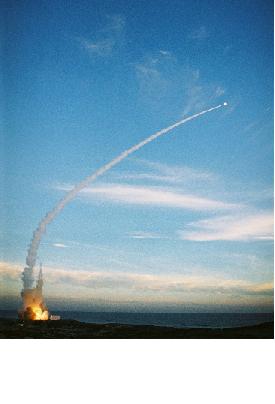Yesterday, January 5, 2003, at 16:37, the "Arrow" weapon system performed a successful system test. This is the tenth test of the "Arrow" missile and the fifth test of the weapon system.

Yesterday, January 5, 2003, at 16:37, the "Arrow" weapon system performed a successful system test. This is the tenth test of the "Arrow" missile and the fifth test of the weapon system.
This test is the first in a series of tests of the weapon system in preparation for the next generation of threats, as part of the Arrow System - ASIP Improvement Program contract signed between Israel and the US.
The experiment was carried out as part of the development plan and is not related to regional tensions.
The goals of the experiment were to test the performance of the interceptor under special flight conditions. Therefore, in coordination with the American partner, an experiment was planned which does not include interception and therefore no real target participated in it. At the same time, the system's capability was tested in a sequence of launches. To this end, a scenario was carried out that constitutes an operational image that includes 4 simulations of targets launched towards the State of Israel. These targets were "injected" into the radar so that all the components of the weapon system worked in their operational configuration. As soon as the test director ordered the activation of the target image, the weapon system went into action. The radar detected the targets and transferred them to the fire management center which calculated a defense plan against each of the targets. The defense plans went to the launcher which was equipped with six missiles. The launcher launched four missiles: a test missile and three missiles with a rocket engine with a short burn time designed to test the fluency of taking off from the launcher. The test rocket was launched first and performed a special trajectory to test future capabilities.
The system was jointly developed by Israel and the United States and is managed by the "Wall" administration in the Ministry of Defense in cooperation with the Administration of Ballistic Missile Defense in the US Department of Defense.
The main contractor for the development of the system is the MLM plant of the Aerospace Industry. The system includes: Elta's "Oran Yerok" warning and fire control radar, Tadiran Systems' "Etrog-Zahav" fire management system, IAI's "Brown Nut" launcher control center and IAI's operational missile launcher. / M.L.M.
The success of the experiment is an important step in the development of the "Arrow" weapon system and in responding to the growing threat of ballistic missiles in the arena.
In today's experiment - difficult maneuvers at unusual angles
The Arrow missile test, held in coordination with the American Ballistic Missile Defense Agency, was the first designed to test the missile's new capabilities.
One of the capabilities tested is action against ballistic missiles with a splitting head, that is, identifying the warhead from among the dummy heads and homing on it. Following the Pentagon's request, tests that will be used by the American missile program will also be carried out as part of the experiment.
Since in the experiment new requirements will be placed on the arrow missile, no target missile will be launched and the arrow will fly in front of a simulation that will only appear on the computer. As part of the experiment, the ground system will be operated, which includes the radar (green pine), the command and control system (golden atrog) and the launch system (brown walnut).
In the experiment, the Arrow will perform difficult maneuvers at unconventional flight angles, aimed at testing the improvements made to deal with future threats.
In addition to the missile test, the launcher will also be tested for the first time in a continuous launch of three missiles. Each launcher has six launchers. In today's experiment, four launch nests, one operational and three dummy nests will be activated one after the other.
The dummy missile, unlike the operational missile with two engines, will have only one engine with one-tenth the amount of propellant - so it will rise for only two seconds and fall hundreds of meters after launch.
